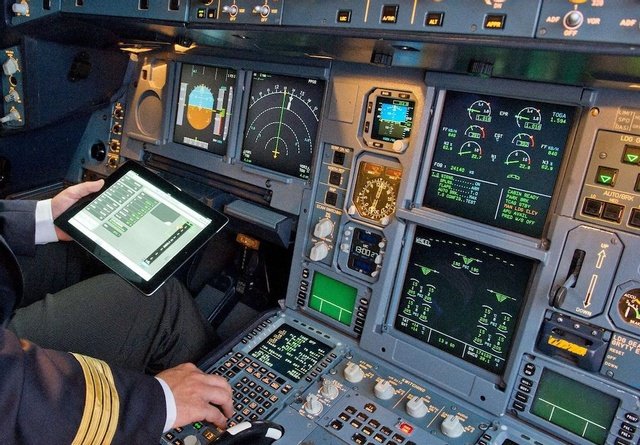The aviation industry has experienced rapid technological advancements, leading to increased connectivity and automation in modern aircraft systems. While these innovations enhance efficiency, safety, and passenger experience, they also expose aircraft to cybersecurity threats. The growing reliance on digital infrastructure and networked systems has made cybersecurity a critical concern for airlines, manufacturers, regulatory bodies, and cybersecurity experts.
This article explores the cybersecurity challenges facing modern aircraft systems, the potential risks of cyber threats, and the necessary measures to strengthen aviation cybersecurity.
The Rising Threat of Cyber Attacks in Aviation
1. Increasing Connectivity and Digitalization
Modern aircraft incorporate advanced avionics, real-time data communication, and networked operational systems, including:
- Flight management systems (FMS) integrated with GPS and satellite navigation.
- In-flight entertainment (IFE) and passenger connectivity services.
- Aircraft communication and reporting systems (ACARS) for operational data exchange.
- Maintenance, repair, and operations (MRO) systems that rely on cloud-based monitoring.
While these technologies enhance performance and efficiency, they also introduce vulnerabilities that hackers can exploit.
2. Potential Cyber Threats to Aircraft Systems
Cybersecurity risks in aviation come in various forms, including:
- Malware and ransomware attacks: Cybercriminals could compromise aircraft software, leading to operational disruptions.
- Unauthorized access and hacking attempts: Weak authentication systems may allow attackers to gain control over critical functions.
- Interference with avionics and flight control systems: Hackers could exploit vulnerabilities to manipulate flight data.
- Data breaches and espionage: Sensitive passenger and operational data could be targeted for financial gain or intelligence gathering.
- GPS and communication jamming: Disruptions in navigation and communication systems pose risks to flight safety.
3. Past Cybersecurity Incidents in Aviation
The aviation sector has already witnessed multiple cybersecurity incidents, highlighting the vulnerabilities within the industry. Examples include:
- Airline data breaches leading to leaks of customer information.
- Penetration tests revealing weaknesses in aircraft Wi-Fi systems that could allow unauthorized access to avionics.
- Reports of cyber intrusions targeting airport infrastructure and ground control systems.
These incidents underscore the need for stronger cybersecurity protocols to prevent potential catastrophic consequences.
Strengthening Cybersecurity Measures in Aviation
1. Enhancing Regulatory Frameworks and Compliance
Aviation regulatory bodies such as the International Civil Aviation Organization (ICAO), the Federal Aviation Administration (FAA), and the European Union Aviation Safety Agency (EASA) must implement stringent cybersecurity guidelines. Key measures include:
- Establishing cybersecurity certification standards for aircraft systems.
- Mandating regular security audits and penetration testing.
- Requiring airline operators to implement robust cybersecurity policies.
2. Strengthening Aircraft System Security
Aircraft manufacturers and operators must integrate cybersecurity measures into system design and operations. This involves:
- Implementing multi-layered encryption to protect data transmission.
- Employing firewall and intrusion detection systems to prevent unauthorized access.
- Ensuring air-gapped critical systems to separate essential avionics from passenger networks.
- Developing secure software updates and patching mechanisms to address vulnerabilities in real time.
3. Improving Incident Response and Risk Management
Aviation cybersecurity strategies must include proactive risk management and incident response protocols:
- Establishing dedicated cybersecurity teams within airlines and aircraft manufacturers.
- Conducting real-time monitoring of aircraft networks to detect anomalies.
- Implementing incident response playbooks to address potential cyber breaches.
- Conducting simulation exercises to test readiness against cyber threats.
4. Cybersecurity Awareness and Training
Human error remains a major factor in cybersecurity vulnerabilities. Comprehensive training programs should be developed to:
- Educate pilots, flight crew, and ground staff on cybersecurity best practices.
- Train IT teams to recognize and mitigate cyber threats.
- Encourage airline staff to follow strict authentication protocols and data security policies.
5. Public-Private Collaboration on Aviation Cybersecurity
Aviation cybersecurity requires collective action from industry stakeholders, including:
- Governments, aviation authorities, and cybersecurity agencies collaborating on threat intelligence sharing.
- Airlines and manufacturers investing in joint cybersecurity research and development.
- Partnering with technology firms to develop advanced cyber defense solutions for aircraft systems.
Conclusion
The increasing digitalization of modern aircraft systems has introduced significant cybersecurity challenges that demand urgent attention. While technology enhances operational efficiency and passenger experience, it also creates potential vulnerabilities that malicious actors can exploit.
To safeguard aviation against cyber threats, the industry must prioritize stronger regulatory frameworks, advanced cybersecurity technologies, comprehensive incident response strategies, workforce training, and cross-industry collaboration. By adopting a proactive approach to cybersecurity, the aviation sector can ensure the safety, reliability, and integrity of modern aircraft systems.







Leave feedback about this